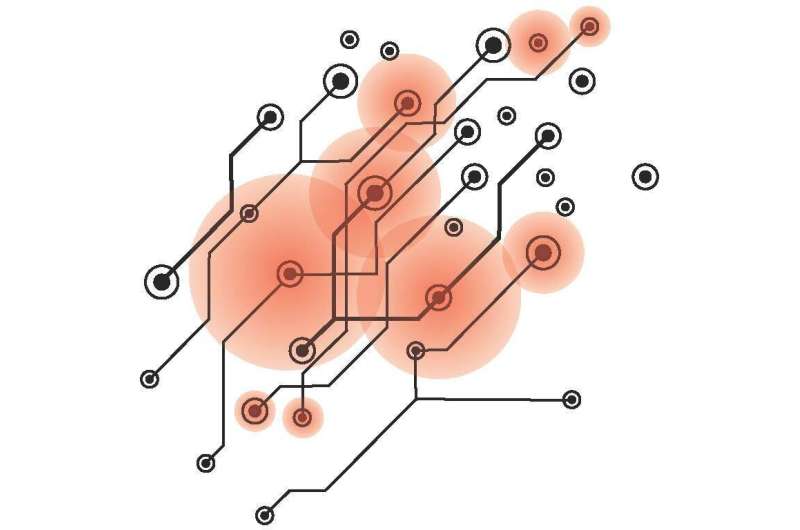Clever timing makes computers produce less heat—even below Landauer's limit

Computer systems produce a lot of heat. Data centers are full of buzzing cooling fans, and even smartphones can heat up with high use. Reducing energy consumption is one of the main challenges in information technology. But there is a theoretical, temperature-dependent lower limit to cooling, as stated by Rolf Landauer in the 1960s. Jan Klaers of UT now shows that by cleverly timing the interaction of heat and logical operations, it is possible to go even lower than this limit. This new theory, presented in Physical Review Letters, may lead to increasingly energy-efficient electronics.
Long before the large-scale introduction of computer systems, in 1961, Rolf Landauer (1927-1999) published his famous article about the minimum amount of energy needed to erase one bit of information, that is, changing it from the "one" state to the "zero" state. This minimum, according to Landauer's Erasure Principle, is temperature-dependent, and connects the laws of thermodynamics and information theory.
Many years later, in 2012, experiments published in Nature confirmed the principle. For the current generation of computers, this lower limit has not yet been reached; typical energy consumption of a logical operation is still about 1,000 times higher. But this will certainly change in the coming decades. Will computing then reach a fundamental limit? In his paper, Jan Klaers proposes a way of reducing energy cost by synchronizing computer operations and temperature in a smart way. With this technique, it will be possible to lower the energy needed for erasure below the Landauer limit.
Operating when cold
Considering the many logical operations that take place in a computer, the temperature profile is complex. If one bit changes state at a certain logical gate, the temperature change will occur in the surrounding gates, as well. Although complex, temperature and energy consumption have the same rhythm as the clock of the microprocessor. These are called squeezed thermal states, and they can be observed during computer operation. This means that at certain times, the temperature and energy costs are lower for the same operations. Synchronizing the logical operations with these moments in which the temperature is effectively colder will lead to energy consumption lower than the Landauer limit.
Klaers analyzed a minimalist mechanical model representing a one-bit memory resembling the one Landauer used for his theory. Further research will have to show what results can be achieved in actual computer systems.
Dr. Jan Klaers is a researcher of the Complex Photonic Systems group, part of UT's MESA+ Institute. Within the group, he started his own research direction in the field of experimental quantum thermodynamics.
More information: Jan Klaers. Landauer's Erasure Principle in a Squeezed Thermal Memory, Physical Review Letters (2019). DOI: 10.1103/PhysRevLett.122.040602 , arxiv.org/abs/1809.02429
Antoine Bérut et al. Experimental verification of Landauer's principle linking information and thermodynamics, Nature (2012). DOI: 10.1038/nature10872
Journal information: Nature , Physical Review Letters
Provided by University of Twente




















